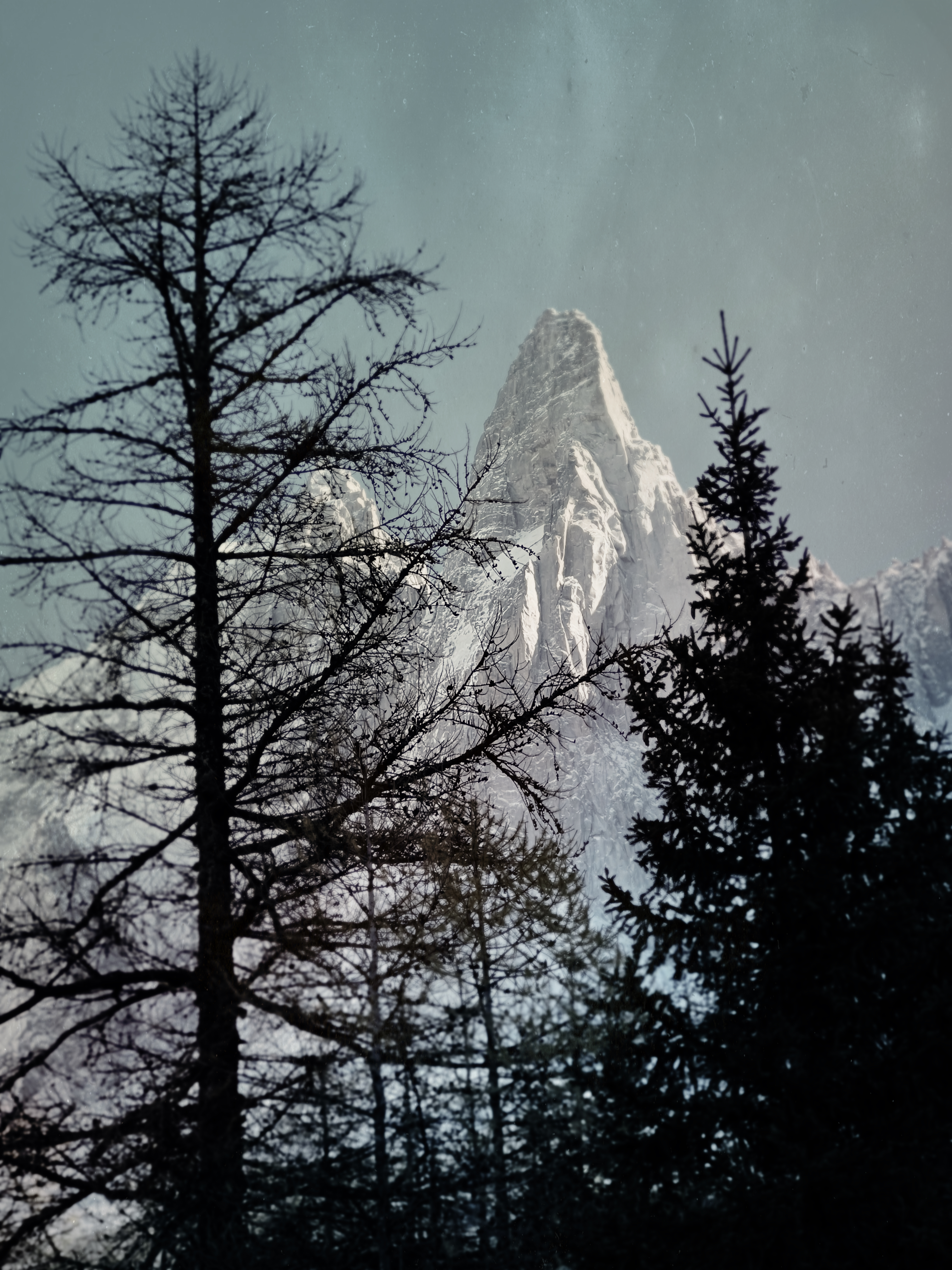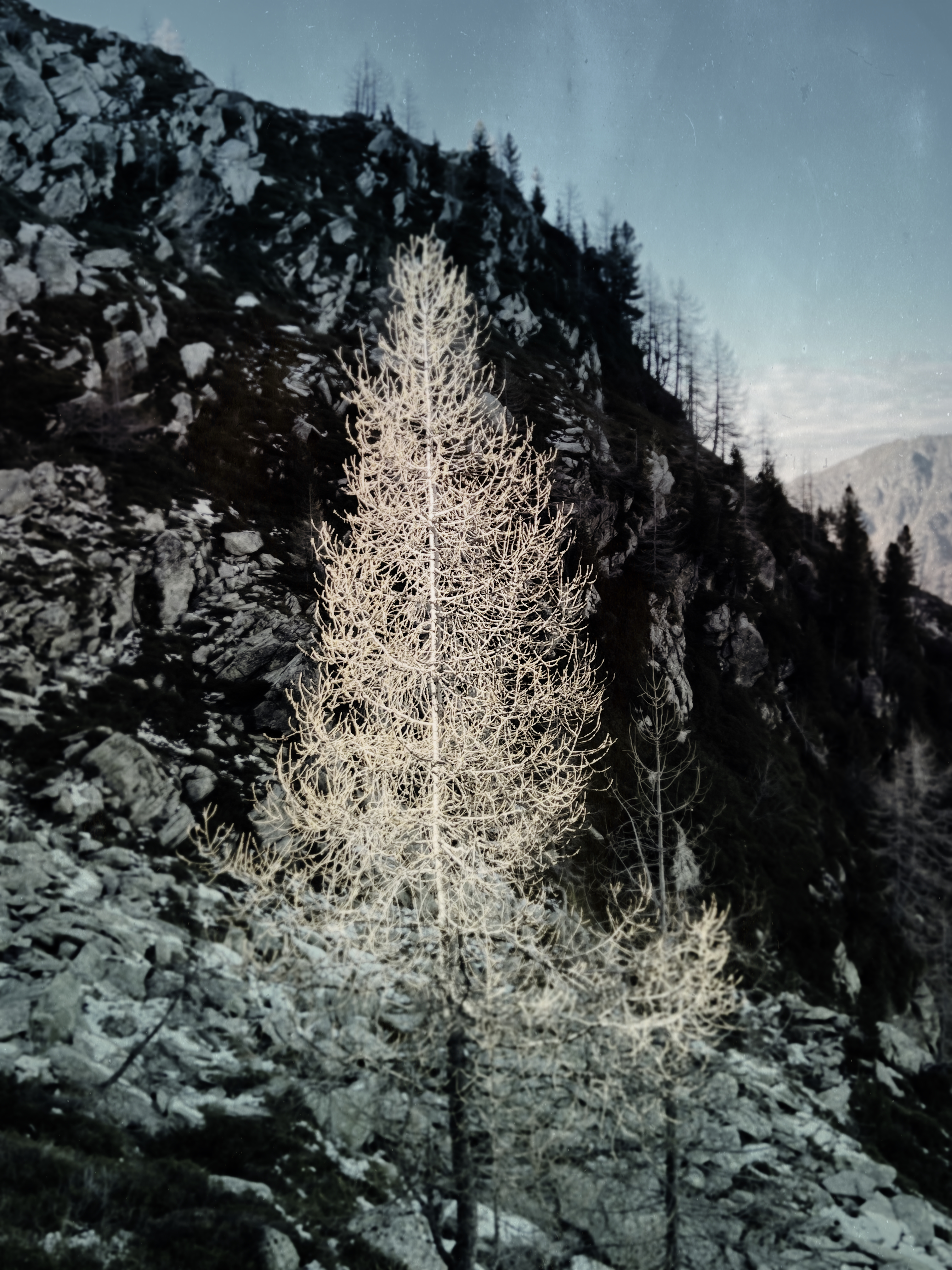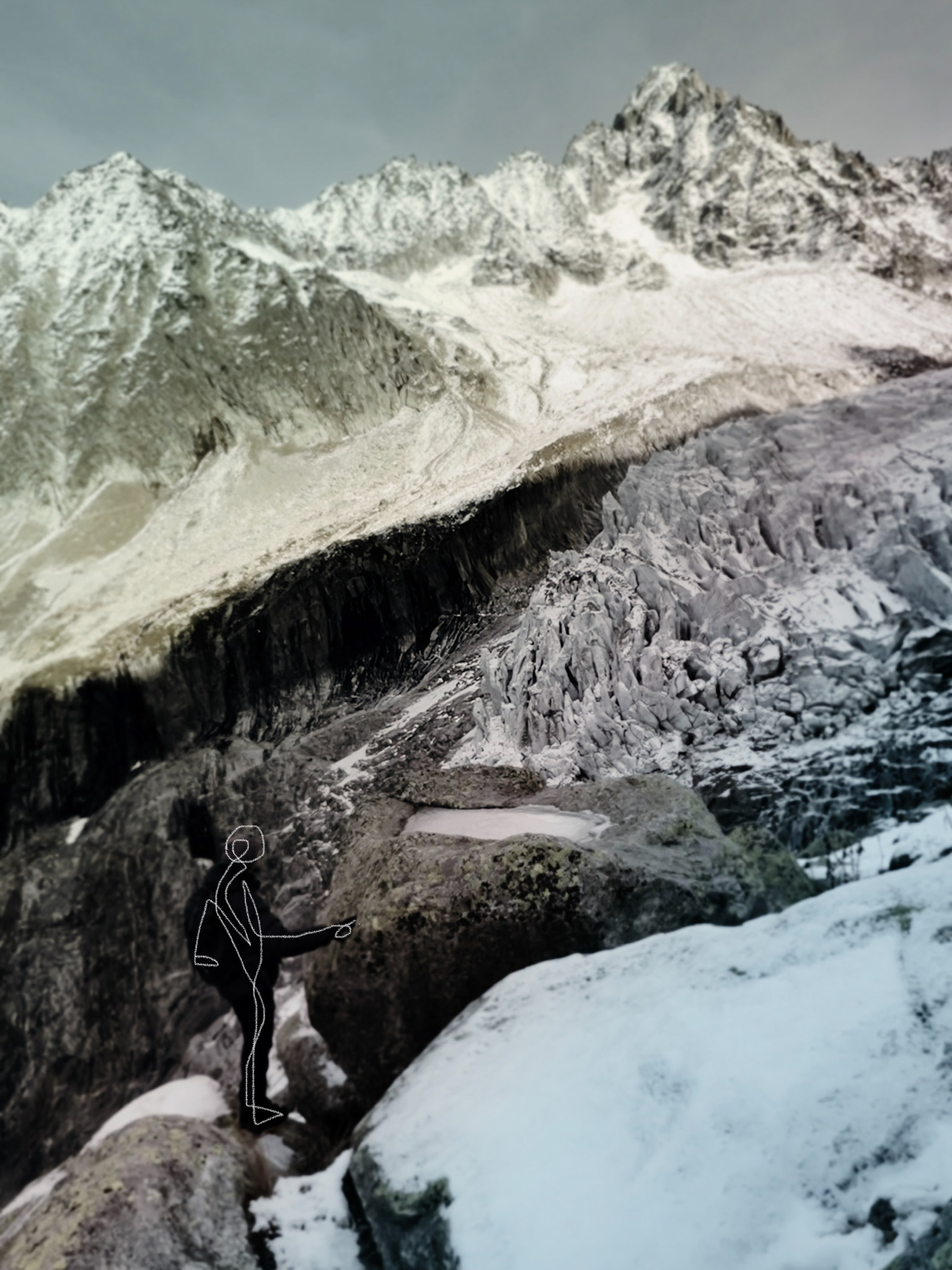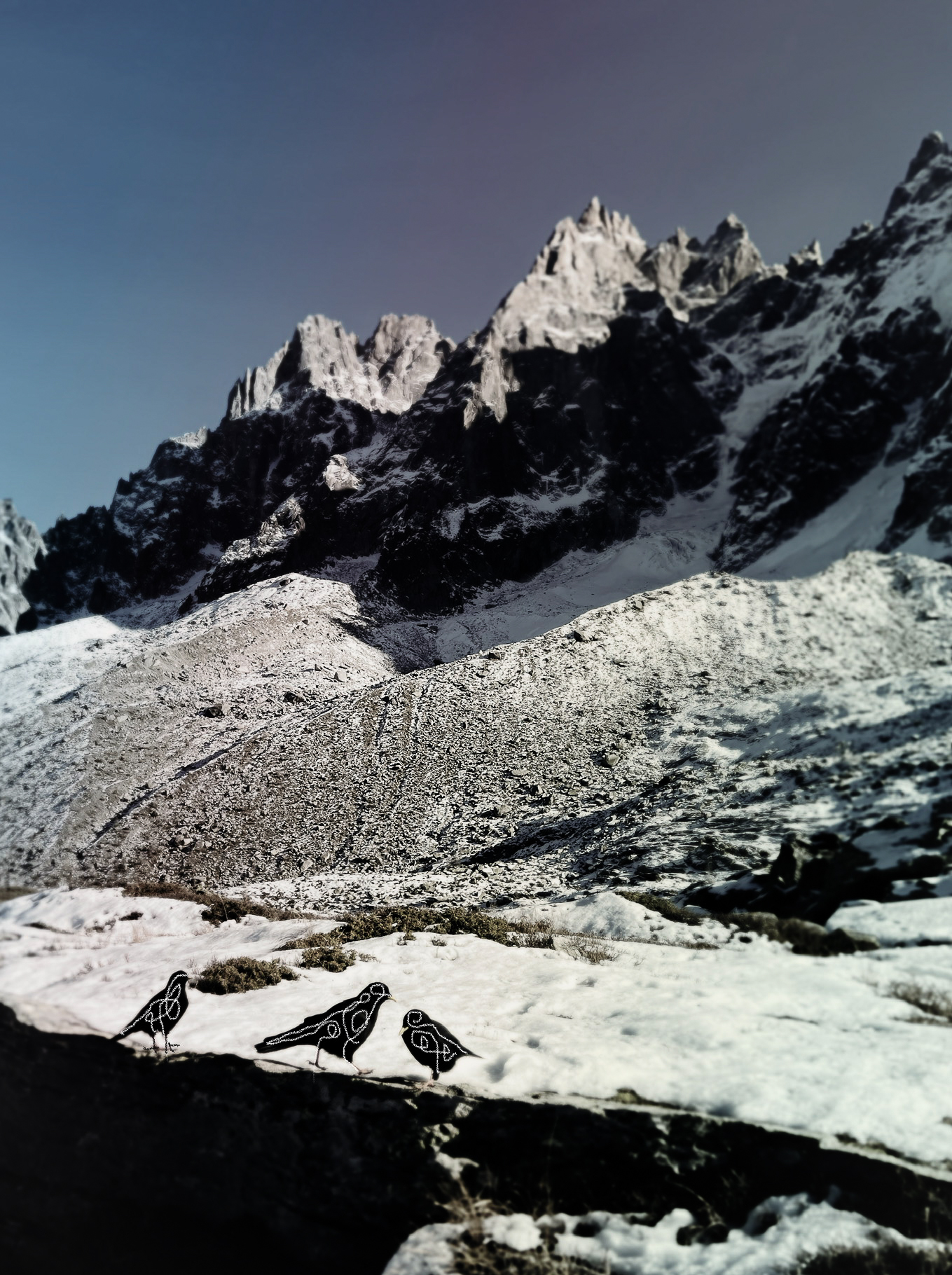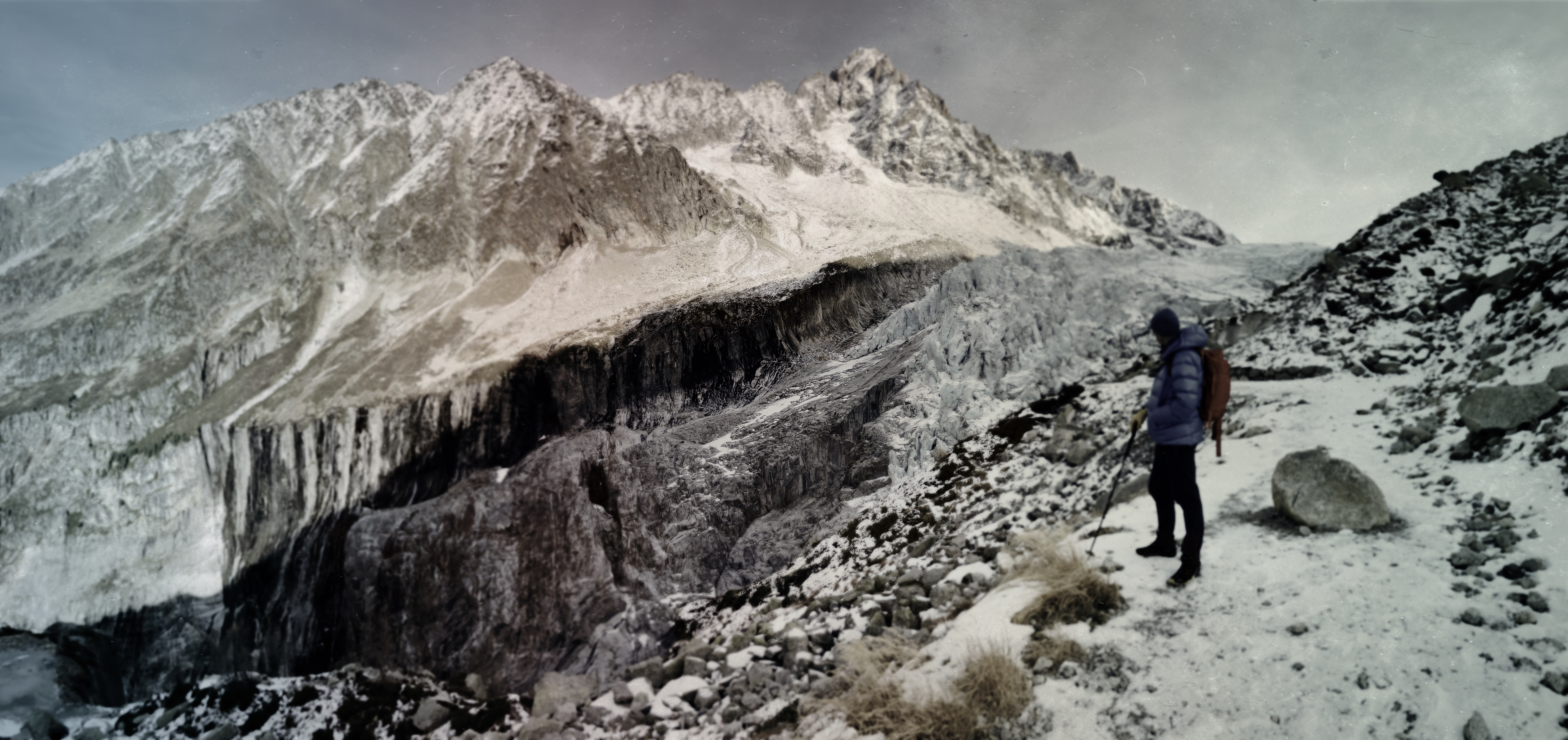Guild Companion Alex Ekins reflects on his Companion Grant project
Alex Ekins was one of five Guild Companions who was given a Grant to mark the Guild's 150th anniversary in 2021. His project, combining his artistic practice, his love of mountains and climbing, and his interest in Ruskin's early recognition of climate change, led him to Chamonix, and here he reflects on the experience and shares some of the images he has made.
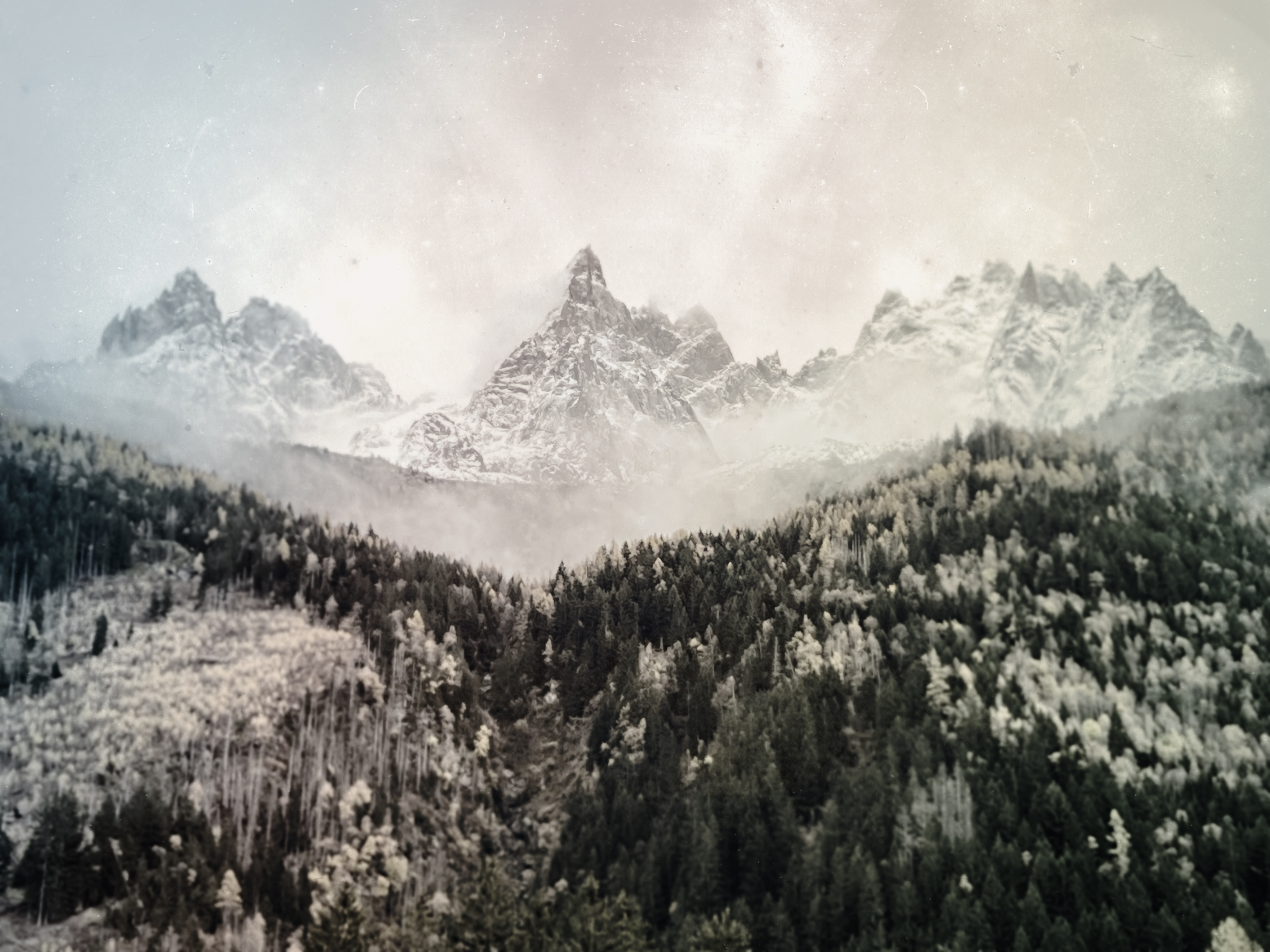
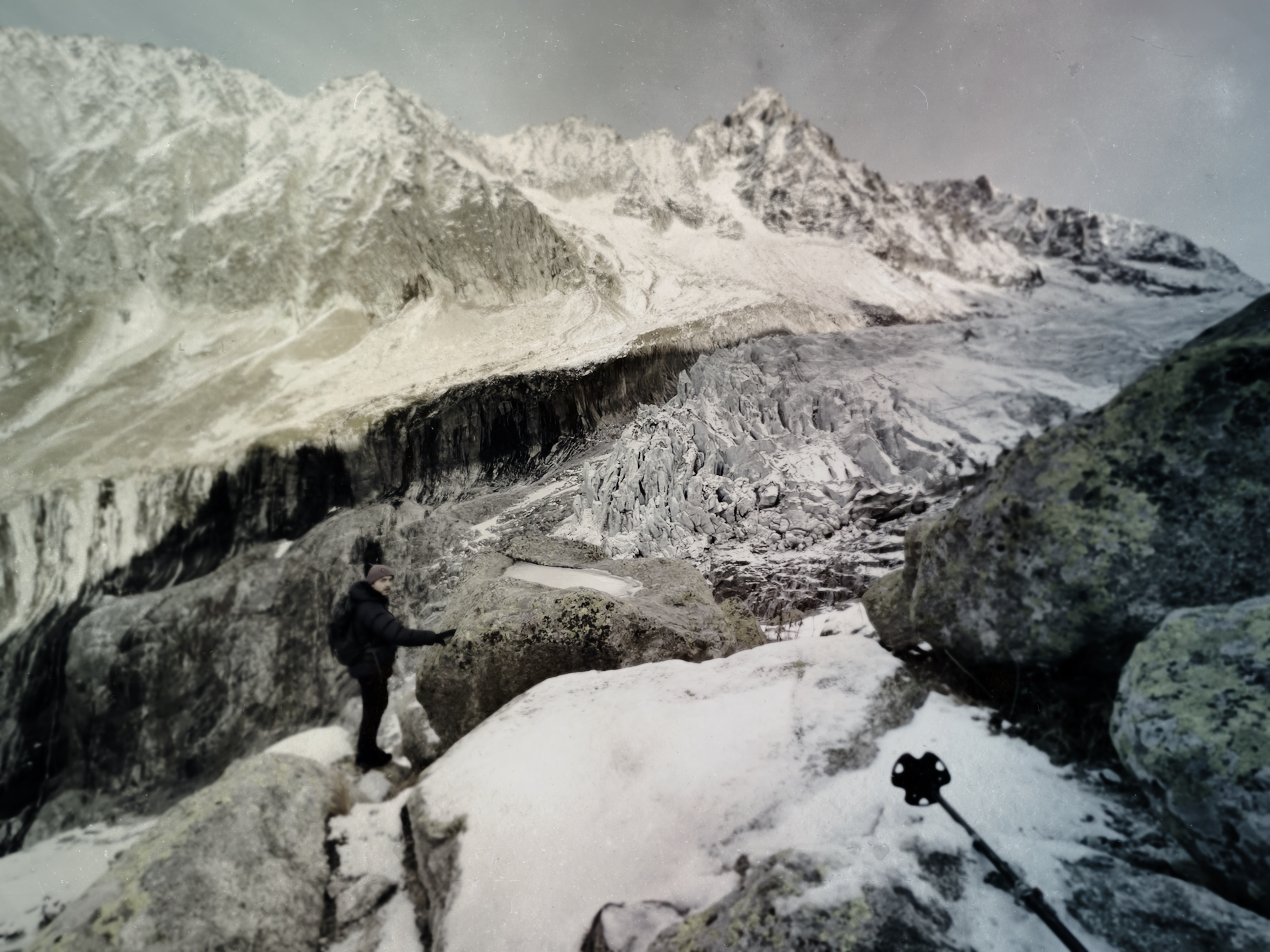
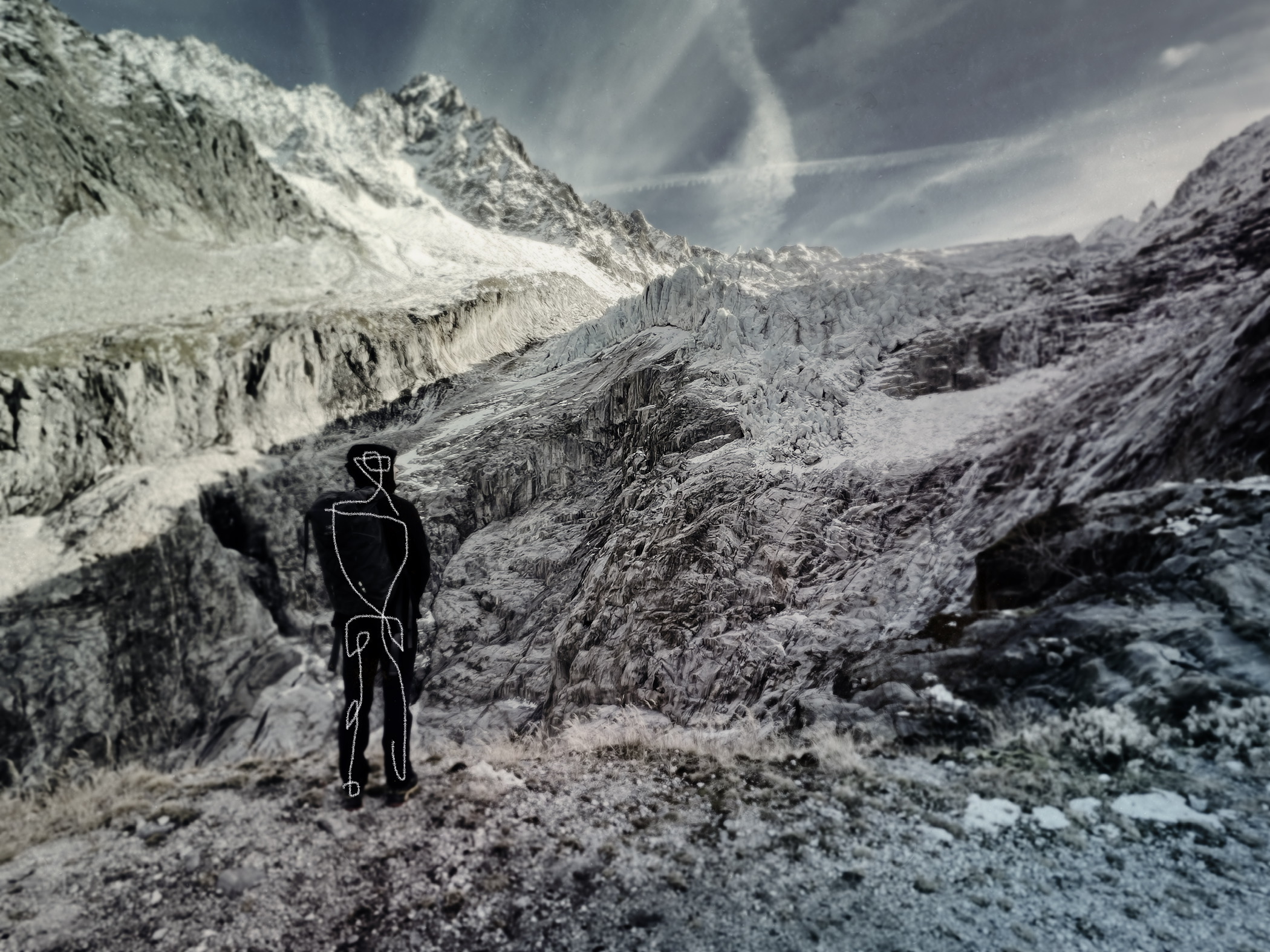
John Ruskin first visited the French Valley of Chamonix as a teenager in 1833. He was at the forefront of what is now known as mountain tourism. Chamonix had only recently become a popular destination for Victorian travellers on their grand tours.
The main attraction was the Mer de Glace, the longest and larger glacier in France, snaking down from Mont Blanc. On Ruskin’s first visit the lower section of the glacier, which was known as the Glacier des Bois was still protruding into the pastures of the valley floor.
Chamonix became one of his most cherished destinations and he returned nineteen times between 1833 and 1888. He was the preeminent observer of his generation and his observations concerning the Mer de Glace were particular visionary "The glaciers below have sunk and retired to a point at which I never saw them till this year; if they continue to retire thus, another summer or two will melt the lower extremity of the Glacier des Bois quite off the rocks”.
By the beginning of the Twentieth Century this lower section had disappeared completely and by 1990 was no longer shown on the official map of Chamonix and the Massif du Mont Blanc published by the Institut Géographique National.
My own first visit to Chamonix was in 1987 and on the first day I walked up to Montenviers. This viewpoint at 1913m has since Ruskin’s time been the pre eminent vista for the Glacier. The three and a half hour walk will bring you to the view shown in Ruskin’s famous 1854 daguerreotype, one of the world's first mountain photographs.
As the decades rolled by the infrastructure catering for tourists increased. First of all the Compagnie des Guides de Chamonix was founded in 1821 to escort tourists onto the Sea of Ice. Many would have been carried up on mules (I’m sure Ruskin would have walked). A hotel was built here in 1880 and then a railway in 1909.
The glacier on my first visit was relatively intact and I remember walking out onto it without too much descent. On a subsequent visit in the mid-nineties I walked down the glacier from the Aiquille de Midi and the glacier was still visibly intact below the hotel. The difference now is truly shocking.
The surface topography of the Mer de Glace changed very little during the first third of the 20th century, but from 1939 to 2001 the surface of the glacier lowered an average of 30 cm each year.
However in 2022 the glacier was losing 10cm a day and it lost 3.5 metres of its thickness during the summer heatwave.
So in November 2022 with the assistance of the Guild of St George 150th Anniversary companion grant, I travelled to Chamonix to witness the change and hoping to produce some art in response to what I saw.
On the first day I walk up to the La Buvette des Mottets, a small and quiet viewpoint just below Montenviers. There is a gap in the trees that once would have allowed visitors to look down on the crevasses of the Mer de Glace. All that ice has now gone. I continue down a path that ends at a warning sign and then descend into what the glacier had left behind.
It feels like descending into loss. Descending through what relatively recently would have been ice. In the bottom of the valley is a ground down dust made landscape studded with grey boulders. Flayed and skeletal. I feel as if I'm in the bones of the mountain, stood amongst the marrow.
Higher up at Montenviers the loss feels more industrial, the off season landscape is devoid of people and there is construction work with cranes giving it a building site feel. The Mer de Glace looks extraordinary diminished, grey with glacier dust. It’s hard to reconcile the view with Ruskin’s 1854 photograph.
A day later I walked up onto the Argentiere glacier, which runs parallel to the Mer de Glace up the valley towards Switzerland. The Glacier here feels more defiant, rearing up above a gorge, its seracs pushing up towards the sun.
Another day takes me up steeply from the entrance to the Mont Blanc tunnel, up and up to an abandoned ski station overlooking the Bossons Glacier. Sadly even here in Late November at a height of 2500m I can hear the sounds of the glacier melting.
My last day takes me up directly above Chamonix and to the pastures below the Aiguilles. The view here is stunning with the granite pinnacles penetrating the blue above. Ruskin once said of Chamonix ‘There is no sky like its sky’. He almost bought this mountainside and dreamed of building his home here. His friends persuaded him that the three hour uphill walk might deter visitors!
But this place reveals Ruskin for what he truly was. It was the mountains he truly loved, where he took his inspirations, where all his ideas on geology, beauty, art and the sublime came to him, blown on the mountains breezes and reflected in the alpine ice.
As I sit here on the mountain, choughs come and feed from my hand and I think back to the first day and the descent in the remains of the Mer de Glace. Into the grey granite dust and ground up mountain. In the bottom of that desolate valley, young saplings were sprouting. Taking moisture and nutrients from the glacial remains and then growing toward the same sun that had melted the glacier where they now grew.
Alex Ekins, March 2023.
All works on this page c. Alex Ekins
